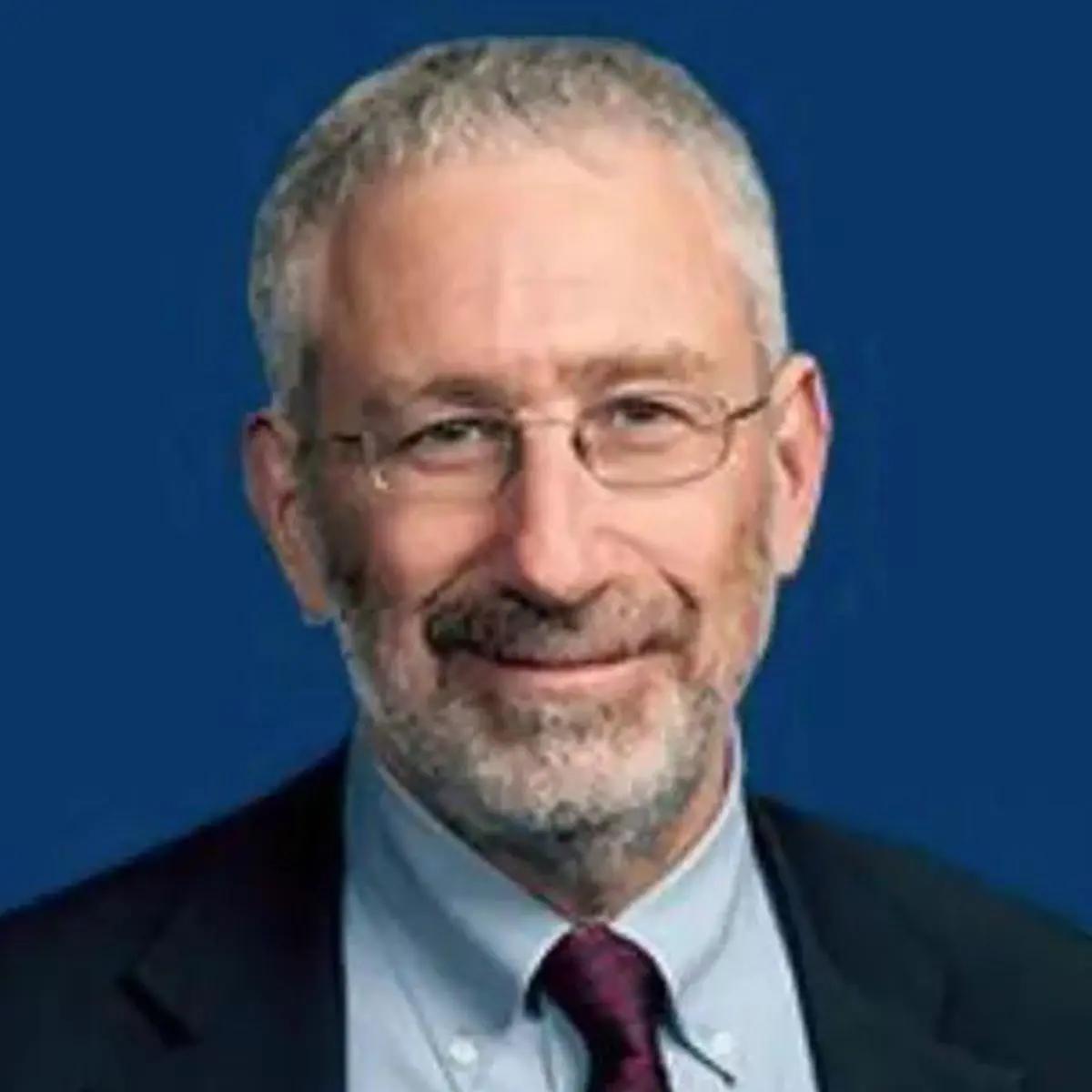Article
Venetoclax Plus Lenalidomide/Rituximab Regimen Delivers Safety, Efficacy in Untreated Mantle Cell Lymphoma
Author(s):
The addition of venetoclax to lenalidomide and rituximab produced early evidence of clinical efficacy with a tolerable safety profile in previously untreated patients with mantle cell lymphoma.
Tycel Phillips, MD

The addition of venetoclax (Venclexta) to lenalidomide (Revlimid) and rituximab (Rituxan) produced early evidence of clinical efficacy with a tolerable safety profile in previously untreated patients with mantle cell lymphoma (MCL), according to findings from a phase 1 trial (NCT03523975).1
At a median follow-up of 27.5 months, no dose-limiting toxicities (DLTs) were observed, and all patients were treated at the estimated maximum tolerated dose (MTD) of venetoclax of 400 mg daily.
Moreover, the median progression-free survival (PFS) was not reached (NR; 95% CI, 31.8 months–NR), and the estimated 2-year PFS probability was 0.89 (95% CI, 0.785-1).
Previously, a phase 2 trial (NCT01472562) evaluated the combination of lenalidomide and rituximab as first-line treatment in patients with MCL. At a median follow-up of 64 months, the combination elicited 3-year PFS and overall survival (OS) rates of 80% and 90%, respectively, and the respective 5-year estimated PFS and OS rates were 64% and 77%.2
“Given the noted efficacy of the [lenalidomide/rituximab] regimen together with the durability reported with long-term follow-up, we sought to evaluate whether the addition of the BCL-2 inhibitor venetoclax would be safe, and secondarily, if the agent could improve outcomes sufficiently to allow use of the regimens in an unselected patient population,” lead study author Tycel J. Phillips, MD, of City of Hope National Medical Center in Duarte, California, and colleagues, wrote in a paper of the findings, published in Blood Advances.1
The multicenter, open-label, single-arm, dose de-escalation phase 1 trial enrolled patients at least 18 years of age with treatment-naïve, symptomatic MCL who had an indication for treatment, an ECOG performance status of 0 to 2, and adequate organ function.
Patients received 20 mg of lenalidomide induction daily on days 1 through 21 of each 28-day cycle, plus venetoclax at 1 of 5 dose levels. All patients, regardless of dose level, received 50 mg of venetoclax starting on cycle 1 day 8. Patients who were determined to be at high risk for tumor lysis syndrome (TLS) were admitted and observed for 24 hours after outpatient administration.
Venetoclax was subsequently escalated weekly until the MTD of 400 mg daily was reached or the patient experienced a DLT. The venetoclax dose escalation protocol was 50 mg daily starting on cycle 1 day 8, 100 mg daily starting on cycle 1 day 15, 200 mg daily starting on cycle 1 day 22, and 400 mg daily starting on cycle 2 day 1. Patients also received rituximab at 375 mg/m2 weekly from cycle 1 day 1 until cycle 2 day 1, then on day 1 of every other subsequent cycle. Patients at high risk or concern for infusion-related reactions were allowed to delay rituximab until cycle 1 day 15. Patients were also required to take 81 mg of aspirin daily unless they were already receiving anticoagulation for another reason.
Patients were initially planned to complete 12 induction cycles; however, a protocol amendment allowed patients to transition to maintenance after 6 cycles if they experienced a complete response (CR) with undetectable minimal residual disease (MRD).
During maintenance therapy, patients received lenalidomide at 10 mg or half their final induction dose for 24 months, venetoclax at 400 mg or their final induction dose for 12 months, and rituximab every other month for 36 months.
This trial’s co-primary objectives were determining the MTD among 5 venetoclax dose levels plus lenalidomide and rituximab, as well as PFS. The co-primary end points were DLTs and PFS. Secondary end points included overall response rate (ORR), time to best response, duration of response (DOR), MRD status at the end of induction, and adverse effects (AEs). The relationship between potential biomarkers and clinical efficacy was an exploratory end point.
From December 2018 to September 2021, 29 patients were enrolled. One patient developed a pulmonary embolus before starting the DLT period and was deemed non-evaluable. Of the 28 evaluable patients, 22 were in active follow-up at data cutoff, and at the time of the study publication, 19 patients remained on the study.
Of the 9 patients who discontinued treatment, 4 discontinued because of disease progression. Another 4 patients discontinued because of other medical reasons, including melanoma recurrence, adenocarcinoma of unknown primary, and myelodysplastic syndrome. Of those 4 patients, 2 died during the study because of secondary cancer. Additionally, 1 patient discontinued the study after completing induction because of treatment intolerance.
One patient with a white blood cell count of over 5 x 105 at enrollment did not receive treatment per the study protocol. They initially received 20 mg of venetoclax and successfully escalated to 400 mg of venetoclax, but they had 1 extra week of dose escalation and a longer DLT period.
During the study, 82% of patients (n = 23) had treatment holds. Thirty-eight percent of patients (n = 8) required reduced lenalidomide doses only, 18% of patients (n = 5) required reduced venetoclax doses only, and 39% of patients (n = 11) required dose reductions for both agents. All dose reductions occurred after cycle 6 of induction. The most common reasons for venetoclax dose reduction were malaise and thrombocytopenia. The most common reasons for lenalidomide dose reductions were thrombocytopenia and diarrhea.
Additionally, 25% of patients (n = 7) discontinued venetoclax prior to planned cessation without progressive disease (PD), most commonly because of prolonged thrombocytopenia and malaise. Twenty-one percent of patients (n = 6) discontinued lenalidomide because of AEs, most commonly malaise. All discontinuations occurred after the DLT period.
In total, 86% of patients (n = 24) completed induction therapy. Of the patients who did not complete induction therapy, 3 had PD or radiographic relapse, and 1 had metastatic recurrence of non-lymphomatous cancer.
Additional data showed that the ORR was 96%, the CR rate was 86%, and the median DOR was 17.8 months. When censoring for patients still in response at the time of their last assessment, the DOR was NR. The median OS was NR (95% CI, NR-NR), and the estimated 2-year OS probability was 0.924 (95% CI, 0.828-1). At 6 months, the estimated cumulative incidence of patients who achieved a CR was 0.75 (95% CI, 0.552-0.88).
The median PFS was longer in patients without a p53 mutation (P < .0001). In patients without a p53 mutation, the ORR and CR rates were 100% and 91%, respectively, vs 80% and 60% in those with a known p53 mutation.
Eighty-six percent of patients (n = 24) achieved undetectable MRD by next-generation sequencing during the study. By months 3 and 6, 57% and 75% of patients, respectively, had undetectable MRD. One patient with undetectable MRD experienced a clinical relapse. This patient had a known p53 mutation, and at the time of relapse, had a new lesion on an unscheduled CT scan.
One patient with a CR had a new clone detected on MRD testing and relapsed within 3 months of this test. Repeat MRD testing revealed increased copies of all noted clones in this patient.
Two patients with undetectable MRD had radiographic assessments indicating PD, but at the data cutoff, neither had relapsed. Follow-up scans for these 2 patients indicated continued remission, and both remained on the study.
The investigators also estimated the conditional PFS distribution for the 27 patients who were alive and progression free at 3 months, stratified by 3-month MRD status. The median conditional PFS was NR in both the MRD-negative and MRD-positive groups, and the estimated 2-year conditional PFS probabilities in these groups were 0.857 (95% CI, 0.633-1) and 0.8 (95% CI, 0.587-1), respectively (P = .037).
Baseline BH3 profiling of samples from 15 patients, including 7 paired samples, showed high mitochondrial depolarization when samples were exposed to the BH3 peptide Bad, indicating initial BCL-2 dependency. MS1-induced depolarization represented potential BCL-2 codependency with MCL-1 in some baseline samples, but the investigators noted no clinical differences in outcome compared with the samples that were only dependent on BCL-2.
On-treatment BH3 profiling showed that most samples did not change their dependency on BCL-2. Although some samples demonstrated increasing dependence on MCL-1, this was not clinically significant. In 1 patient, BH3 profiling correlated with clinical response to venetoclax. This patient had little to no baseline Bad-induced mitochondrial depolarization, and their day 15 sample had higher sensitivity to apoptotic priming by BH3 peptides with MS1.
All enrolled patients experienced AEs. The most common AEs were decreased neutrophil counts (any grade, 85.7%; grade ≥3, 75%), decreased platelet counts (60.7%; 60.7%), anemia (50%; 32.1%), febrile neutropenia (14.3%; 14.3%), TLS (14.3%; 14.3%), hypokalemia (28.6%; 10.7%), decreased WBC counts (21.4%; 10.7%), decreased lymphocyte counts (14.3%; 10.7%), diarrhea (75%; 7.1%), fatigue (71.4%; 7.1%), upper respiratory infection (25%; 3.6%), dysgeusia (42.9%); 0%), nausea (42.9%; 0%), headache (39.3%; 0%), bruising (28.6%; 0%), constipation (28.6%; 0%), pruritis (28.6%; 0%), abdominal pain (25%; 0%), and maculopapular rash (25%; 0%).
“While longer follow-up is needed, the results obtained thus far in those without p53 mutations suggest that durable responses can be achieved without the addition of cytotoxic agents in MCL patients irrespective of age or fitness,” study authors concluded.
References
- Phillips TJ, Bond DA, Takiar R, et al. Adding venetoclax to lenalidomide and rituximab is safe and effective in patients with untreated mantle cell lymphoma. Blood Adv. Published online April 4, 2023. doi:10.1182/bloodadvances.2023009992
- Ruan J, Martin P, Christos P, et al. Five-year follow-up of lenalidomide plus rituximab as initial treatment of mantle cell lymphoma. Blood. 2018;132(19):2016-2025. doi:10.1182/blood-2018-07-859769







%20(2)%201-Recovered-Recovered-Recovered-Recovered-Recovered.jpg?fit=crop&auto=format)

%20(2)%201-Recovered-Recovered-Recovered-Recovered-Recovered.jpg?fit=crop&auto=format)